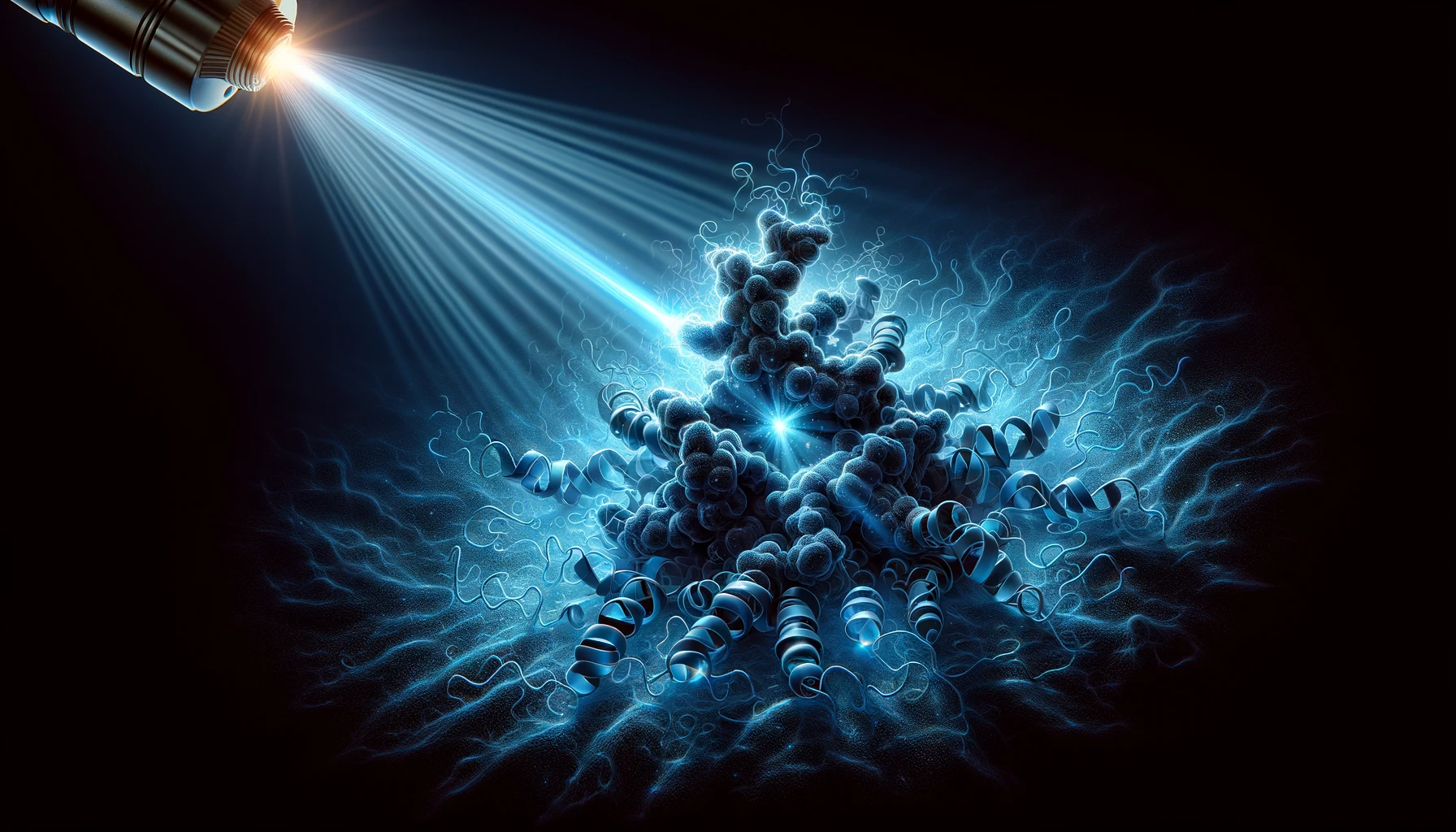Intrinsically disordered protein
Shed light on the 'dark proteins' in live cells
At our lab, we are dedicated to shedding light on the molecular dynamics and functions of intrinsically disordered proteins (IDPs). These enigmatic proteins have eluded conventional biophysical tools, especially within live cells, due to their elusive conformations and dynamics. The molecular mechanisms and functions of these proteins remain largely obscured, which is why they earn the moniker 'the dark proteins'. Remarkably, over 40% of proteins in mammalian cells belong to the category of IDPs, playing pivotal roles in viral infection, diseases, and signaling. Drawing upon interdisciplinary tools such as advanced fluorescence microscopy and microfluidic devices, our research endeavors to illuminate the hidden facets of IDPs, particularly their involvement in neurodegenerative disorders, aiming to unravel critical insights and potential therapeutic avenues.

IDPs in neurodegeneration
A group of IDPs, including TAR DNA binding protein 43 (TDP-43), FUsed in Sarcoma (FUS), and Heterogeneous Nuclear Ribonucleoprotein A1 (hnRNP A1), has emerged as significant contributors to protein aggregates in patients affected by amyotrophic lateral sclerosis (ALS) and frontotemporal dementia (FTD). The hallmark neuropathological features of these disorders involve the mislocalization of thoses IDPs from the nucleus to the cytoplasm and the presence of abnormal cytoplasmic aggregates in neuronal and glial cells. Research indicates that ALS-causing mutations in TDP-43 and FUS induce their accumulation in cytosolic membraneless organelles known as stress granules. In vitro, liquid-like condensates formed by purified TDP-43 undergo a transformation into solid-like aggregates, a process accelerated by ALS-linked mutations in the disordered region. While it is widely believed that aberrant phase transitions underlie the formation of pathological IDP aggregates in neurogenerative disease, the precise origins of these abnormal phase transitions and their contribution to neurodegeneration remain elusive. Using novel interdisciplinary tools, we endeavor to explore the underlying molecular mechanisms.
IDPs in the nuclear pore complex
The nuclear pore complex (NPC) governs nucleocytoplasmic transport through its central channel filled with hundreds of IDPs known as FG-nucleoporins (FG-NUPs). Our state-of-the-art research centers on unraveling the dynamic conformations and functional mechanisms of FG-NUPs inside NPCs, utilizing synthetic biology and advanced fluorescence microscopy. As we probe the disorder–function relationships of FG-NUPs in situ, our discoveries shed light on the previously unexplored molecular environment within the nanosized transport channel, portraying it as a 'good solvent.' This profound understanding is pivotal for precisely regulating transport between the nucleus and cytoplasm. Future endeavors in our lab aim to deepen our comprehension of IDPs within nuclear pores, particularly their involvement in cargo transport and viral infection. Leveraging interdisciplinary tools, we aspire to conduct live-cell studies, unraveling the dynamic intricacies of IDPs and unlocking the mysteries of nuclear transport and its broader implications.
IDPs in gene regulation
Another intriguing facet of our research focuses on the role of intrinsically disordered proteins (IDPs) in gene regulation, aiming to illuminate the intricate connections between these 'dark proteins' and the control of genetic information. The involvement of IDPs in gene expression, transcription, and chromatin remodeling adds a layer of complexity to cellular processes that remains insufficiently understood. Through cutting-edge techniques such as advanced fluorescence microscopy and genomics, we seek to unravel the dynamics and functional implications of IDPs in the context of gene regulation within live cells. As these elusive proteins play crucial roles in orchestrating molecular events that govern gene activity, our investigations aim to shed light on their specific contributions to cellular function and potential implications for diseases and therapeutic interventions.





